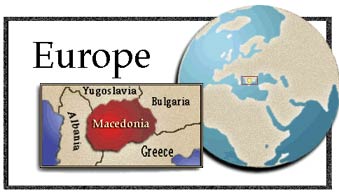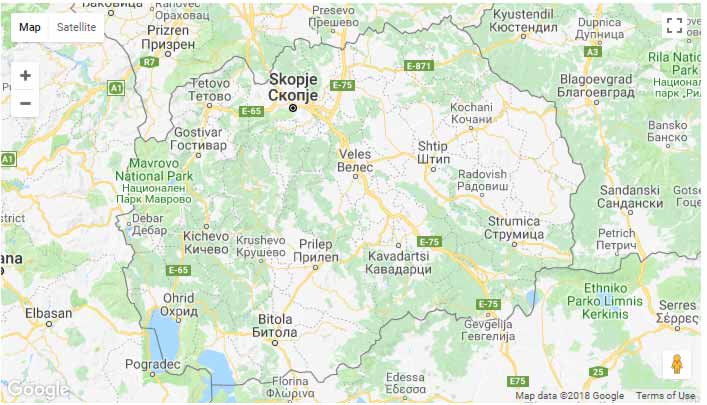
Location of Republic of Macedonia
The Republic of Macedonia is a small, landlocked country in the Balkans, bounded on the north by Serbia, on the east by Bulgaria, on the south by Greece, and on the west by Albania. Its capital is Skopje. Formerly part of Yugoslavia, it became independent in 1991.
The territory of the Republic is located between 40 deg 50′ and 42 deg 20′ north latitude and 20 deg 27’30” and 23 deg 05′, east longitude.
Sometimes called Vardar Macedonia, after the Vardar river, which flows southeast through its territory into Greece, Macedonia consist mostly of highlands and mountains, with elevations reaching 2,751m in the Korab range on the Albanian border. The mountains consist of crystalline shale, dolomite, and limestone, with karst in some places; they are separated by tectonic depressions occupied by the Vardar River valley and by a number of lakes, the largest of which are Ohrid, Prespa, and Dojran. Earthquakes have occurred frequently in Macedonia.
The Macedonian climate is Mediterranean, the summers being generally hot and dry, the winters mild, with some rain or snow. The mountain slopes are covered by mixed forest and shrubs to an elevation of 2000m and by steppe meadows above that level.
A small agricultural sector exists, but very little of the land is suitable for farming. Mineral resources include zinc, magnetite, iron, chrome, lead and asbestos.
Where is Macedonia on a map

Virtual Macedonia
Republic of Macedonia Home Page
Here at Virtual Macedonia, we love everything about our country, Republic of Macedonia. We focus on topics relating to travel to Macedonia, Macedonian history, Macedonian Language, Macedonian Culture. Our goal is to help people learn more about the "Jewel of the Balkans- Macedonia" - See more at our About Us page.
Leave a comment || Signup for email || Facebook |
History || Culture || Travel || Politics














